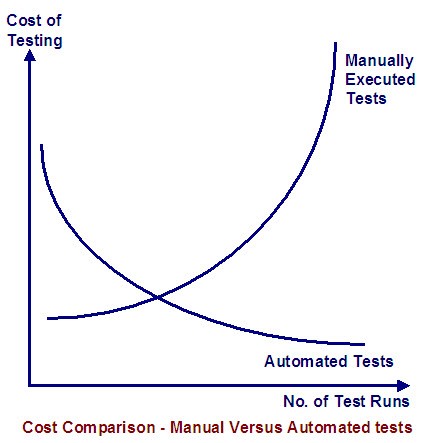Manual Testing vs Automation Testing: Which Is Right for My Software Project?
Manual Testing vs Automation Testing: Which Is Right for My Software Project?
Testing is a critical part of any software project. Thus, it’s important to have a strategic testing methodology to ensure you’re delivering a quality product to customers.
We can broadly categorize testing into two areas:
- Manual testing: Test cases are authored and executed by a QA tester.
- Automation testing: Test cases are programmed or scripted using an automation tool.
While manual testing is self-explanatory, automation testing is a relatively new concept. And because of this, it almost always comes with a certain level of resistance. After all, how can you fully trust a machine? Then again, when compared to manual testing, automation offers a lot of perks when it comes to reducing time and cost.
| Pros | Cons | |
|---|---|---|
| Manual Testing |
Use when you are running the test only once or twice
Use when testing for user-friendliness, as it allows for human observation |
Can quickly become inefficient when running tests multiple times
Can be prone to human error, hence it is less reliable |
| Automation Testing |
Use when you are running tests multiple times, as it is significantly faster than the manual approach
Use when reliability is extremely important since you can program it to catch things a human might miss |
Too time-consuming to write code for the testing program if it's only going to be used once or twice
Does not entail human observation, thus it cannot test for user-friendliness |
While both manual testing and automation testing come with advantages and disadvantages, the key is knowing when to use one over the other. The right approach will incorporate manual and automation testing at different points in the software testing cycle.
When to use Manual Testing in the Testing Cycle
Manual testing is best suited when testing is in the system/exploratory phase. This type of testing typically comes in the form of brainstorming sessions to determine whether the requirements are testable or not. It relies on the tester’s knowledge, creativity, and expertise of the system that he/she is building.
Later in the lifecycle, manual testing comes back into play when conducting usability tests. This scenario asks for the tester to measure how convenient and user-friendly the application is for the client. Thus, it requires a human to test the application to uncover any points of confusion or mission-critical features that could fly under the radar of an automatic test.
When to Use Automation Testing
Automation testing is best suited in the regression testing phase. This is because automation testing has the ability to quickly run large suites of test cases whenever there is a code change or deployment.
Another stage in which automation testing is the preferable choice is during the performance testing phase. Automated tools can measure the load and stress of the software more accurately and efficiently than a human ever could – helping to save time and money in the process.
Using Automation and Manual Testing Together
Let’s say you’re working on a software project where you are running frequent code deployments. After each, the standard practice is to use smoke testing to detect bugs or issues. If you’re running these tests manually, then you must create a ticket for each issue. Once the issue is fixed, then you must re-test to ensure basic functionality is working properly post-deployment. Needless to say, this process can be extremely tedious and, depending on the number of issues, push your timeline back significantly.
By layering automation testing over manual testing, the developer can run and execute smoke testing while running automation test cases simultaneously. This yields more test coverage after every deployment and is sure to catch any underlying issues.
Striking a Balance
Here’s the bottom line: The cost for automation testing is high if you’re only running a test once, but the cost goes down with each run because the program has already been created. Manual testing works the opposite way: it starts out cheap, but with every run, the cost increases because of a higher execution time.

The way to reach an optimal return on investment is to find that sweet spot where the two lines intersect. At BDO Digital, we apply both automatic and manual testing as part of our strategic development approach.


SHARE